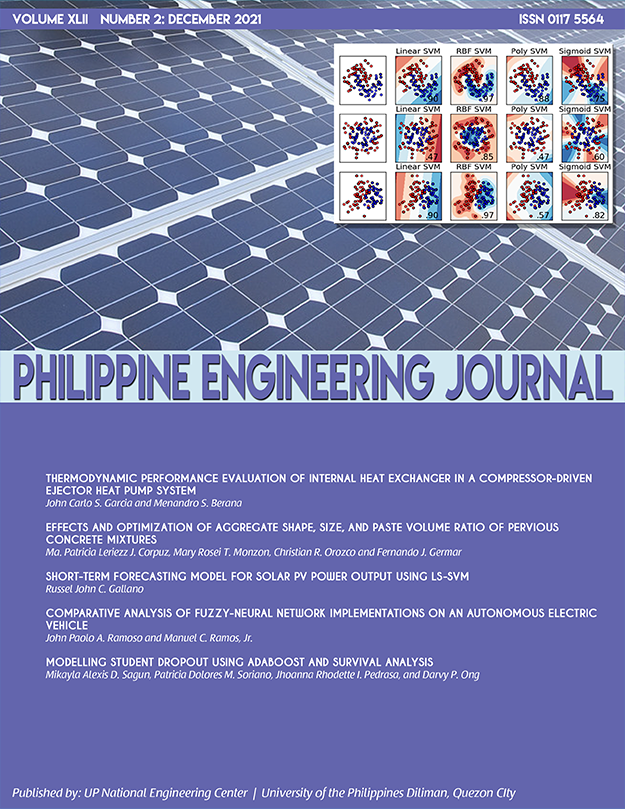Effects and Optimization of Aggregate Shape, Size, and Paste Volume Ratio of Pervious Concrete Mixtures
Abstract
Pervious concrete has been widely used in other countries due to its environmental benefits such as water quality improvement and high permeability. However, due to its high void content, this type of concrete has a significantly lower compressive strength compared to conventional impermeable concrete. In the Philippines, the use of pervious concrete is minimal. To achieve its most effective performance, this paper aims to optimize pervious concrete mixtures in terms of permeability and compressive strength by varying aggregate shape, size, and paste volume (PV) to inter-particle void ratio (IPV). The effect of viscosity modifying admixture (VMA) on the permeability and compressive strength was also quantified. The optimized mix consists of single graded 9.5 mm, angular aggregates with 70.90% PV/IPV. This proportion can produce a compressive strength of 17.95 MPa and a permeability of 1.35 mm/s, applicable for low-traffic pavements such as parking lots. Adding VMA increased the compressive strength by 23.74% and decreased permeability by 35.49%.
Keywords— pervious concrete, permeable concrete, paste volume, strength, void ratio


